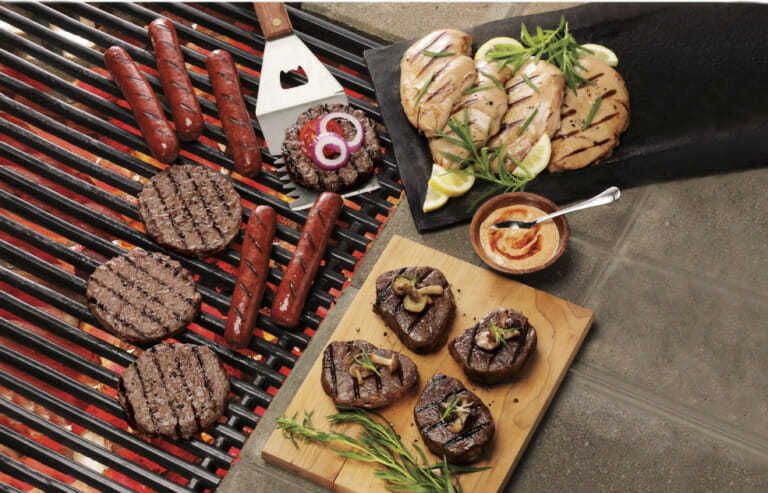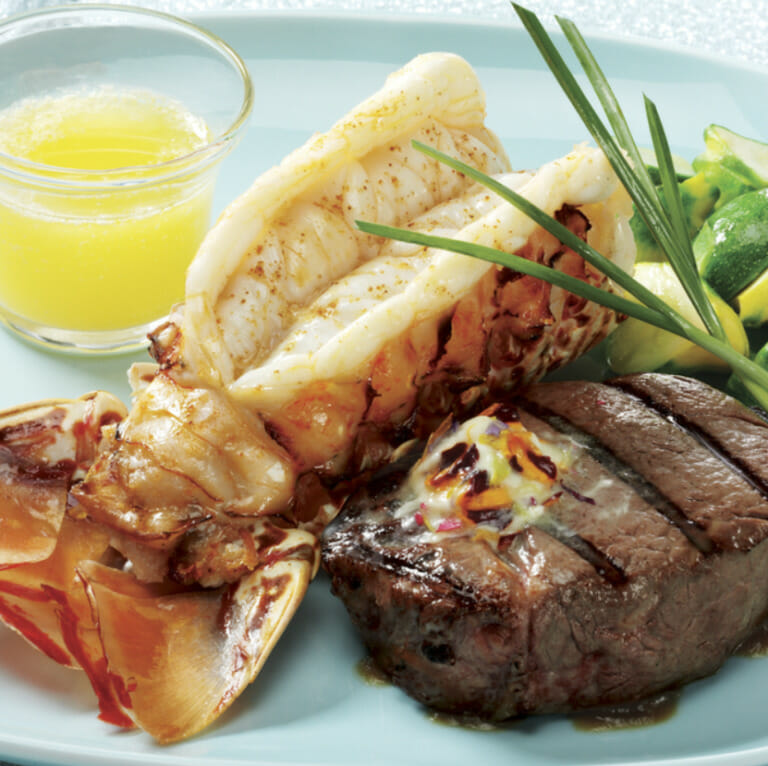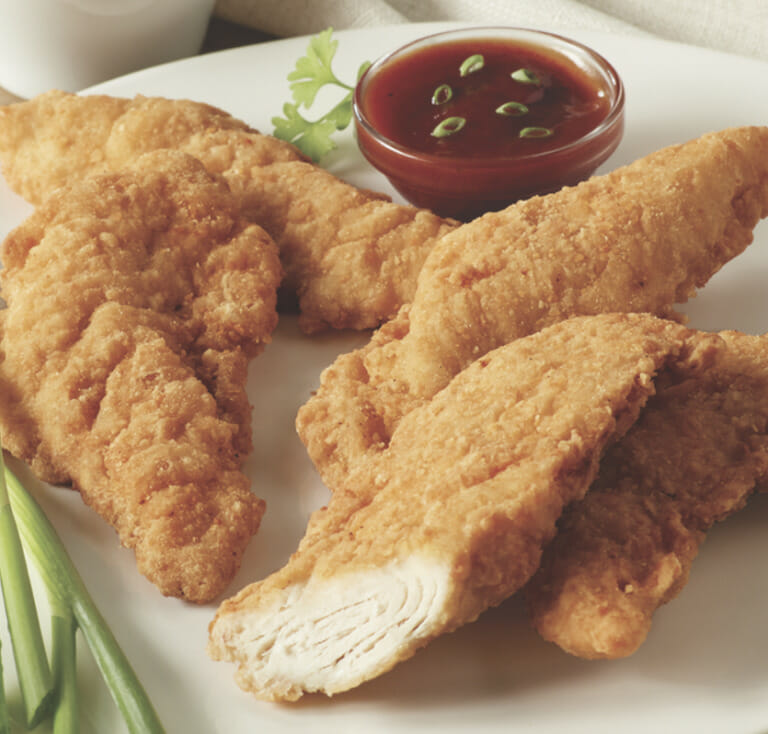Bone-In Prime Rib: The Ultimate Christmas Dinner
Learn how to cook a bone-in prime rib roast and put together a fabulous Christmas dinner menu, including side dishes and wine. It’s easier than you think!
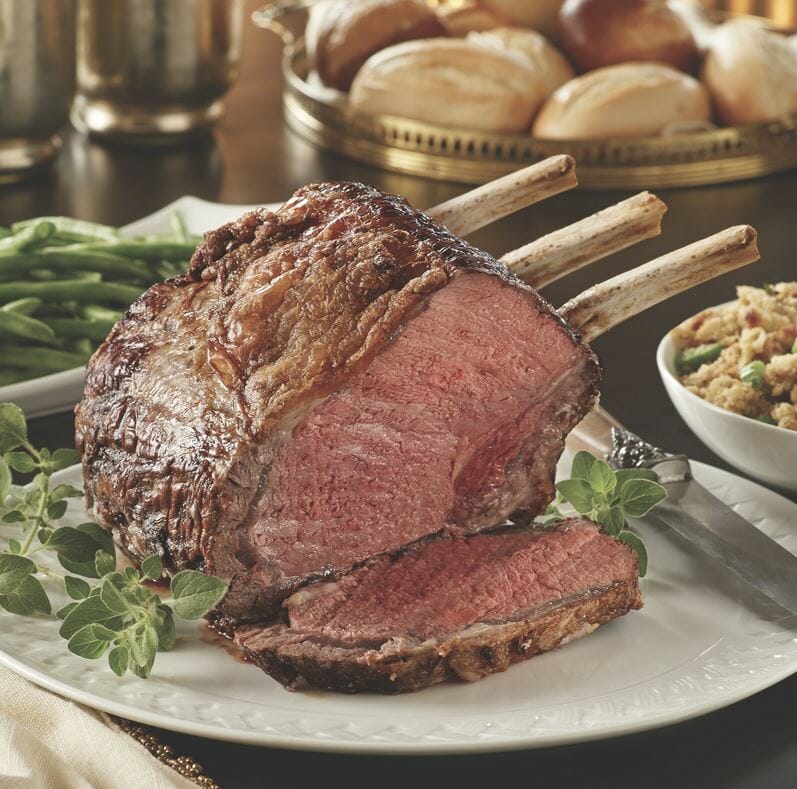
Christmas dinner is one of the most important meals of the year…one for which you’ll definitely want to put your best foot forward. Actually, a better choice for the table would be a tender, juicy, bone-in prime rib roast.
Tradition runs deep at Christmastime, and the prime rib roast is dripping with tradition as much as it’s dripping with its own savory jus. The English perfected its presentation before importing America’s native turkey and adopting it as the go-to Christmas roast. But here in the States, we eat so much turkey at Thanksgiving that for many it’s hard to imagine doing it all over again a month later. And when you consider that our wide-open plains produce some of the finest beef in the world, this cultural swap makes a lot of sense.
Anatomy Lesson: Why Is It Called “Prime Rib”?
First off, the word “prime” is somewhat misleading. It does not reflect the official USDA grading system (Prime, Choice, Select) regarding the fat content, or “marbling,” of beef. It only means that it is the most desirable part of the rib section of the beef. Now, about that “rib section”…
This cut is not part of a rack of ribs such as one might barbecue; the traditional beef spareribs are actually a section of the rib cage which is slowly cooked to tenderize the meat between the bones. The prime rib roast is the section of the loin, or backstrap, that rests along the spine and atop the rib cage. A bone-in or “standing” rib roast is cut with part of the ribs still attached, allowing it to “stand” so the meat doesn’t touch the roasting pan. A boneless rib roast has been cut away from the ribs and the spine.
A rib roast consists of a center part (loin muscle), called the “eye,” and an outer, fat-marbled muscle called the “cap.” A rib roast may be sliced into individual steaks; when the cap and outer fat is trimmed away it is known as “rib-eye steak.”
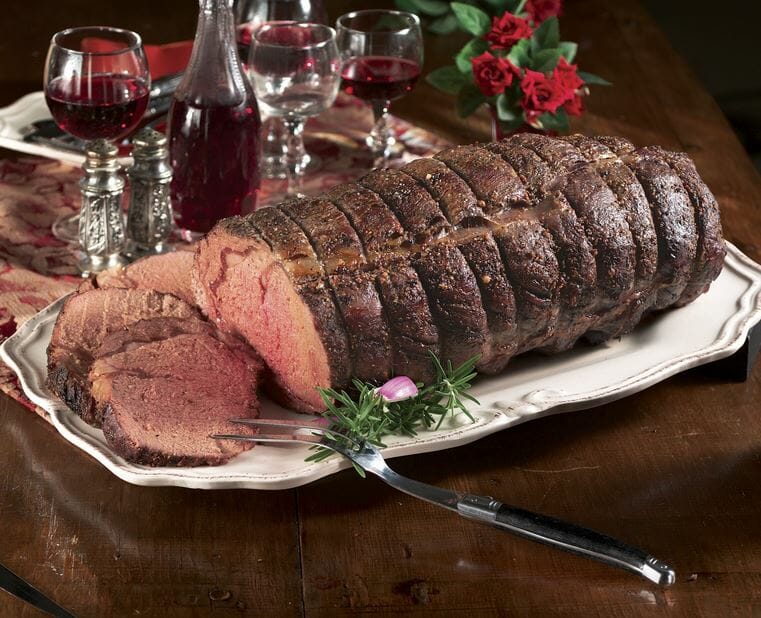
Buying the Best Prime Rib
For your special Christmas dinner, you’re going to want to splurge on quality. You could go for a truly prime prime rib, as in USDA Certified Prime, but those heavily marbled beauties with all that sumptuous fat generally go to top restaurants and are hard to come by. It may be better to instead seek out a fine aged prime rib roast. Aged beef is similarly hard to find in the supermarket, but you’ll find aged prime rib and other cuts for sale online that come right to your door.
The typical prime rib serving size is around 10 ounces per person; a roast weighing 7–7½ pounds should serve 11 or 12 people.
How to Cook a Prime Rib Roast
Some people are intimidated by the thought of cooking prime rib because it’s an expensive cut of meat. In reality, it’s a pretty simple process. Because this cut is tender and generally well marbled, it does not require marinating or braising in liquid. It benefits from slow roasting in dry heat, either in an oven or over indirect heat on a covered grill (preferably on a rotisserie). It’s pretty low-maintenance, and actually bastes itself with the fat left on its outside. For equipment, all you really need is a metal roasting pan and an instant-read meat thermometer.
Here’s how to roast your Christmas prime rib:
- The night before you’ll be cooking the prime rib, unwrap it and let it sit uncovered in the refrigerator. This will dry out the surface for better browning.
- The day of the event, leave your roast out for up to 2 hours to allow it to come to room temperature and ensure even cooking.
- Preheat oven to 450 degrees. Roasting at an initially high temperature sears the roast on the outside to seal in juices and create an appealing brown crust.
- Make a simple seasoning rub of freshly cracked black pepper, kosher salt and thyme. Rub all over roast, covering all exposed meat.
- Place meat in roasting pan, bone side down, and roast 15 minutes.
- Reduce temperature to 325 degrees and continue to roast another 10 or more minutes per pound, or until desired internal temperature is reached (120°F for rare, 130°F for medium-rare, 140°F for medium, 150°F for medium, or 160°F for well done. (Always use temperature, not time, to determine when meat is done.)
- Tent the roast with foil and allow to rest 20–30 minutes. It will continue to cook during this time, allowing juices to permeate the meat. Once the temperature comes back down to 120°F, it’s ready to carve and serve,
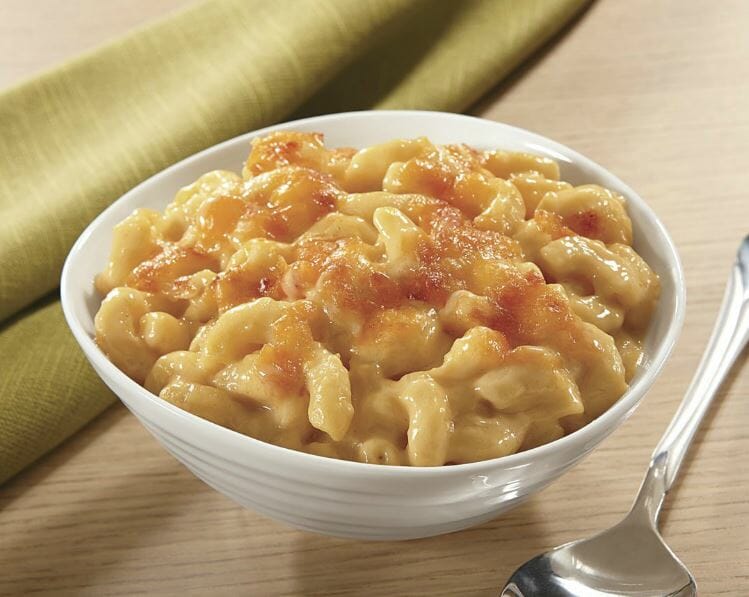
Sides, Etc.: The Prime Rib Christmas Dinner Menu
So what do you serve to complement this fabulous roast?
Side: The classic British accompaniment is Yorkshire pudding. No, not the sweet dessert pudding we grew up with in America, but something resembling a popover. It’s plenty easy, but remember: this is classic British cuisine…and to those who didn’t grow up with it, it can be pretty bland. A more flavor-packed side would be a loaded baked potato, or a comforting casserole containing the same ingredients.
A casserole with green beans or broccoli offers complementary flavors…bonus points if it contains cheese. Come to think of it, you can’t go wrong with a gourmet version of the classic mac ’n’ cheese.
Condiment: Many purists want nothing more than a simple au jus treatment for their roast (hint: au jus [oh zhoo] means “with juice”; it’s a phrase, not a thing), but a creamy, zesty horseradish sauce is delightful with prime rib.
Salad: The bacon-and-blue cheese-loaded wedge salad served by traditional steakhouses as a starter is making a comeback, and is a fabulous way of dressing up the crunch of iceberg lettuce.
Dessert: Serve something chocolatey to complement the red wine you’ll likely want to serve with your roast.
What Wine Goes with Prime Rib?
This one’s easy. While the “red with meat, white with fish” rules have been relaxed somewhat in today’s laissez-faire culinary climate (really, should there even be rules about food?), some things just naturally go together. The wine should be red. The British would drink what they call a claret, which is their term for a Bordeaux.
Bordeaux is a wine region (some would say THE wine region) in France. The wines there are mainly cabernet sauvignon and/or merlot, with other grapes sometimes added for depth. These wines tend to be big, dry and full of flavor.
Of course, cabernet and merlot grapes are grown in many regions. A cab/merlot blend called Meritage (a marketing term that rhymes with heritage) is California’s version of Bordeaux, and California zinfandel (NOT white zinfandel) is an intense red that’s great with beef. Also, don’t forget about South America. Argentina in particular is beef country, and is the home of some excellent malbec wines (a grape originally from the Bordeaux region) that go very well with grilled steaks and roast prime rib.
Burgundy (pinot noir) is too light in body and flavor to match up with beef for many people’s taste, but is a great option for those who can’t handle the tannins that give deep reds their dryness and give some folks headaches. And if you really can’t drink reds at all (you’re not alone), a buttery, oaky chardonnay will be your best bet. Better yet, pour a nice sparkling Champagne for the perfect effervescent contrast and really celebrate the moment.
With these simple tips in mind—and a premium aged prime rib roast chilling in the fridge—you’ll be ready for a Christmas dinner that will be remembered for years.
